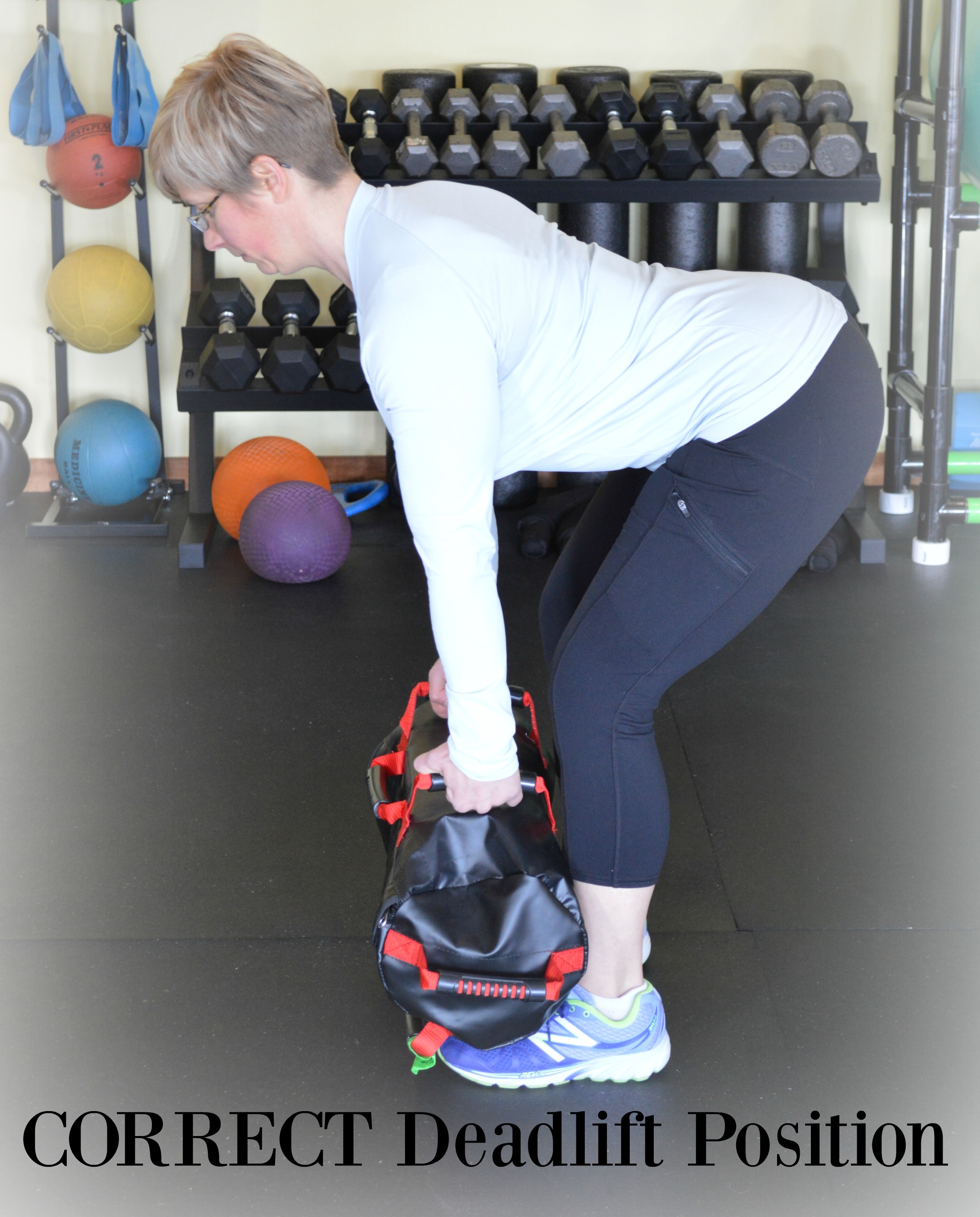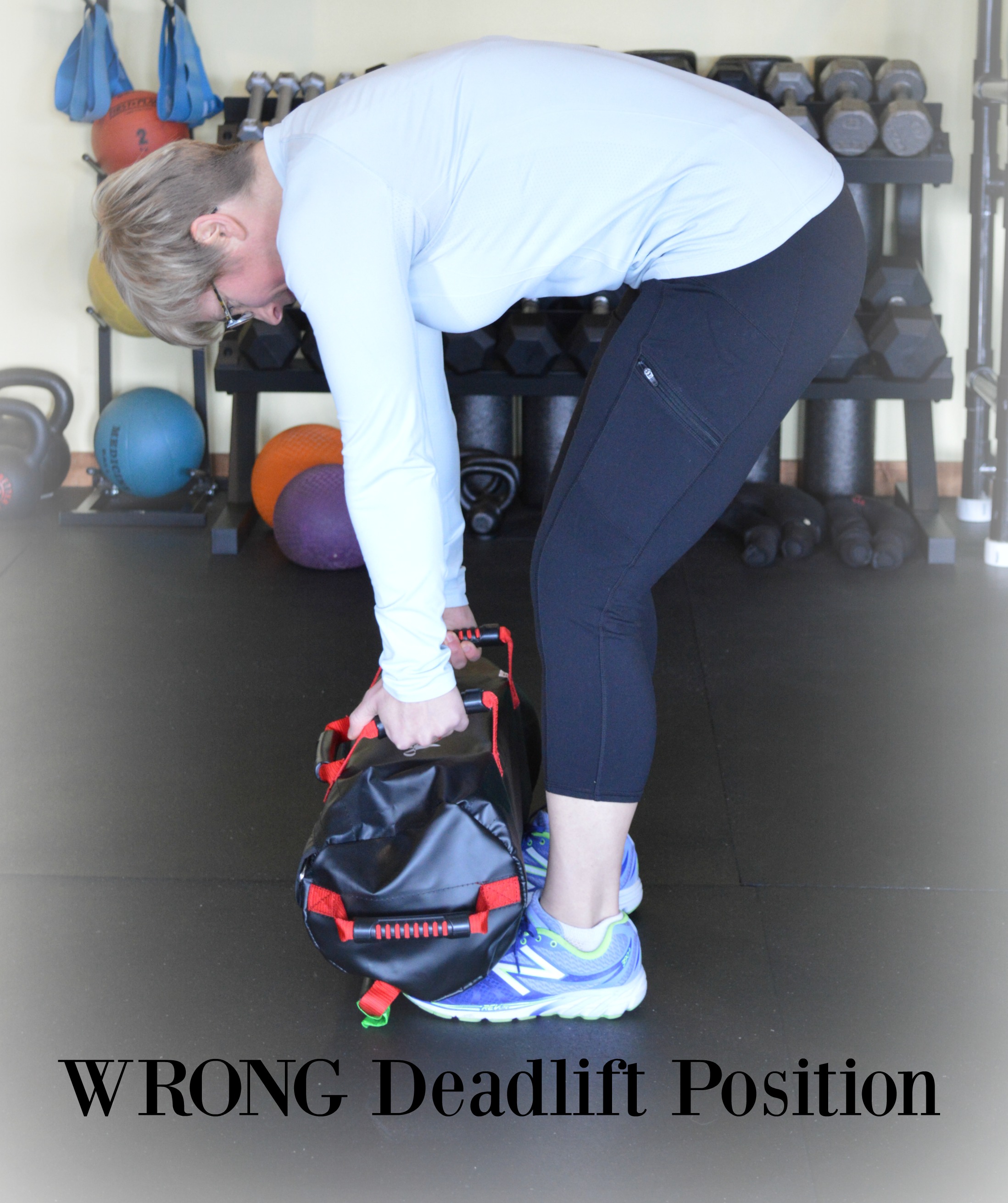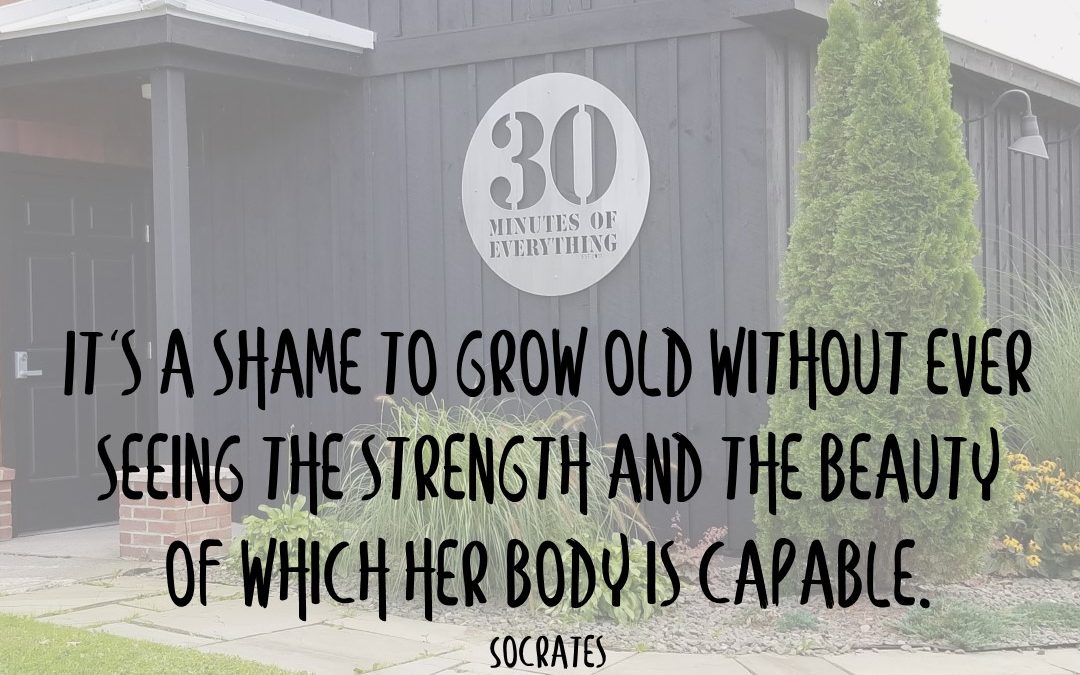Repeatedly my clients will hear me talk about the hip hinge movement. It’s one of the most functional movements we do. It’s a great whole body strength builder, when done properly. When done improperly, it’ll kill your back and make you want to cry! If you ever feel that way during a hip hinge, you need to stop immediately. This exercise works the entire posterior chain – fancy word for the entire back of your body! You will feel this primarily in your hamstrings and glutes (back of legs and butt). If you feel it anywhere else then you need to recheck your form and adjust properly. Let’s set up the hip hinge by using the deadlift exercise with the Ultimate Sandbag as an example:
- Start with your feet about hip width apart, all 10 toes planted into the floor, slight bend in your knees, and grabbing the neutral handles of the sandbag.
- You want your whole hand to grasp the whole black handle while you rotate your arm outward so that your elbow crease points forward. At the same time you will pull the handles apart so that you are engaging your lats (big muscles on the sides of your back).
- By pulling your arms apart, you are also setting your back into a flat back position (no rounding of your spine).
- Push your feet into the ground, pull the handles apart, and keeping a flat back – you stand up to a straight position. At this position, you squeeze your glutes and straighten your legs.
- Still keeping your back flat and pulling the handles apart, you HINGE at your HIPS by pushing your hips backward and leaning your upper body forward while keeping a flat back. The sandbag must stay against your shins the entire time.
- Lower the bag to mid shin while keeping your flat back then you stand up again.

You will continue this hip hinge motion while keeping your back flat, pulling the handles apart, arms rotated so elbow crease is forward, and pushing through your feet. Doing the deadlift incorrectly can result in back pain and other issues. If you are feeling the movement anywhere other than your glutes and hamstrings (!) then you have a break in your back position. Using the “WRONG” image, you can see that my back is rounded. This will immediately put the force in my lower back as well as my neck and between my shoulder blades. Ouch! You must start from the CORRECT position in order to perform the movement.

This movement is not about the amount of weight you can lift. It is about your form and body position! The positioning of your body must be correct in order to perform the movement correctly, regardless of how much you’re lifting. So . . . my emphasis is always on PROPER form. If your body can’t get into position just yet then we use lighter loads and hone in your form. Again, this is a great functional exercise that when done properly, uses your WHOLE body!

